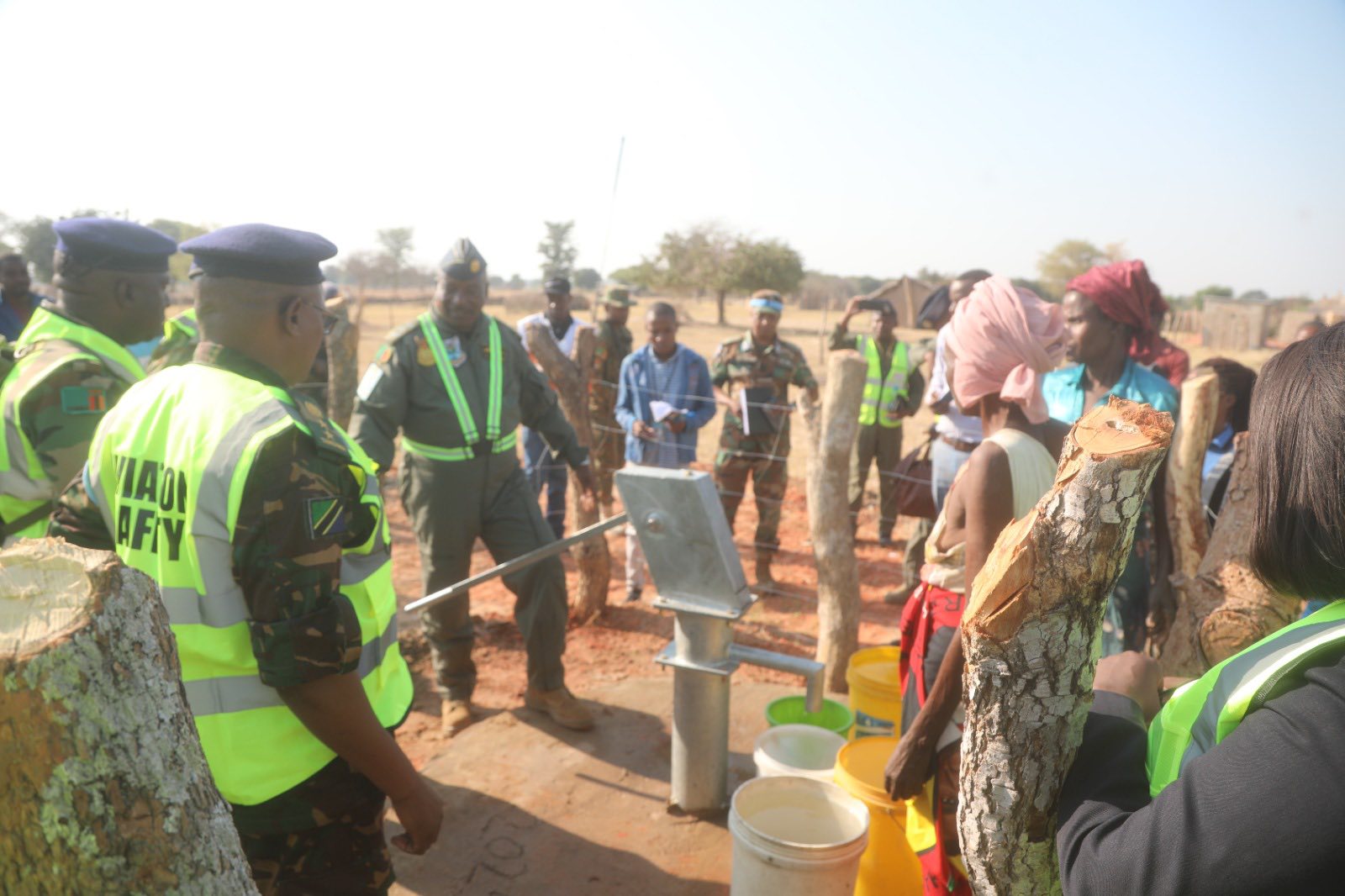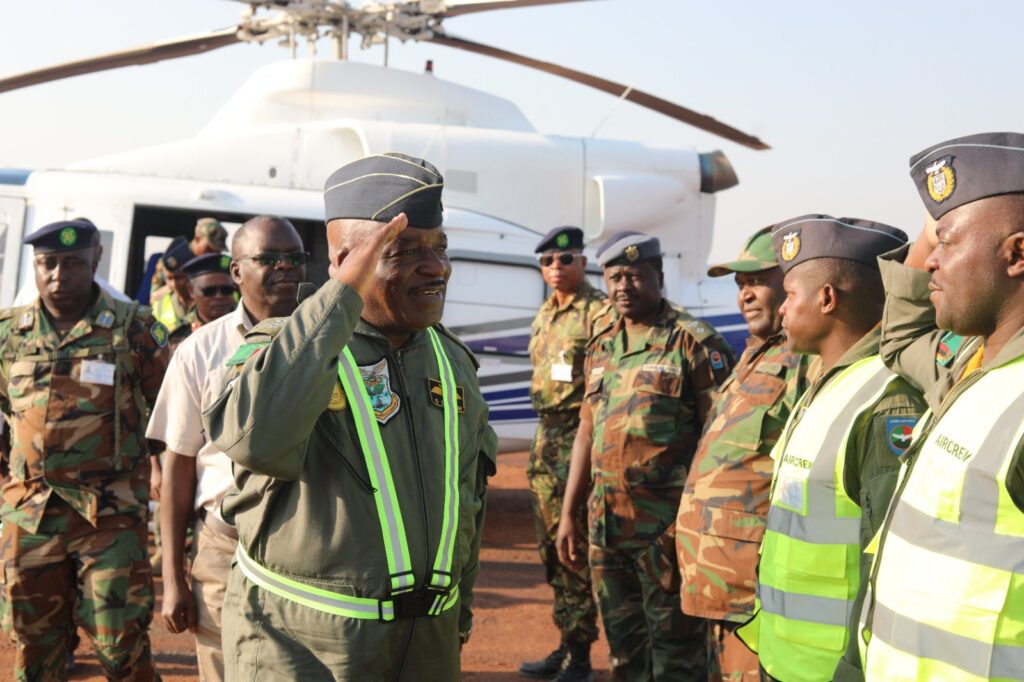The people of southern and eastern Zambia have been hit the hardest by a severe drought that began almost two years ago, so military aircraft delivering 50-kilogram bags of maize brought much-needed relief.
Zambia declared a national emergency in 2024, but with ongoing food shortages and water scarcity, the Southern African Development Community (SADC) arrived at the right time with Blue Lugwasho, a 19-day humanitarian and disaster response exercise with nearly 1,000 of the region’s air force troops working alongside Zambian forces.
“It’s not an exercise for these people, it’s a reality,” Zambia Air Force (ZAF) Director of Public Relations Col. Mutale Kasoma told ADF. “It’s a real-life situation and real-life assistance coming from the government. This has been our worst drought in about four decades.”
SADC air forces, Zambian Army Soldiers and members of the Zambian National Service delivered 450 metric tons of maize to drought-stricken districts including Gwembe, Itezhi-Tezhi, Livingstone, Maamba, Mulobezi, Mwandi, Namwala and Sinazongwe.
Blue Lugwasho began on September 8 with a command post exercise in the capital, Lusaka, to plan and coordinate the logistics of airlifts from Lusaka to bases in Livingstone, Maamba and Namwala. Field exercises from September 18 to 25 delivered the supplies.

ZAF Commander Lt. Gen. Oscar Nyoni visited Namwala on September 21 and inspected the runway, which had fallen into disrepair over time as civilians and livestock frequently moved across it in search of clean water.
As part of Blue Lugwasho, military engineers drilled two boreholes and outfitted the wells with hand pumps. They also resurfaced and extended the airstrip, enabling fixed-wing aircraft to land and distribute humanitarian aid.
“The runway was in a bad state,” Nyoni said in a ZAF video. “It was being encroached upon. We were able to fence it. Given that the water is now outside the perimeter of the airfield, we hope that this facility can be available for use by other vehicles going forward.”
Dozens of children and other Namwala residents watched the infrastructure work and gathered around one of the pumps to watch Nyoni demonstrate its use. He urged members of the community to maintain the upgraded facilities.
“This airport has come to life,” one resident told the ZAF. “It’s wonderful to see the Air Force doing this work on the ground.”
Although focused on delivering relief supplies, Blue Lugwasho’s field exercises also included an asymmetrical warfare element with air and ground forces simulating humanitarian aid deliveries in a conflict zone.
“We try to attach realism to the exercise in the sense that when you have situations where you have to distribute relief supplies, it’s not always smooth,” Kasoma explained. “There are times when you get some rogue elements like rebels or terrorists. So, you need to know how to react when you face such a situation.”

Nyoni said that Blue Lugwasho was the first of SADC’s Blue exercises, which date back to 1997, to incorporate asymmetrical warfare training. “Participating air forces must train for the real world, not just theory,” he said during the opening ceremony in Lusaka.
Zambian Special Forces Deputy Group Commander Lt. Col. Fredrick Mulonda and his unit took part in a scenario in which insurgents attempted to disrupt SADC air forces’ humanitarian efforts.
“Transnational security challenges in most cases are nontraditional in nature,” he said in a September 20 ZAF video. “So, we need this continued collaboration. Joint training is the way to go, a multinational approach such as this one. Exercises such as Blue Lugwasho not only strengthen military readiness but also build unity and resilience in tackling shared security challenges across the SADC region.”
Medical outreach was another real-world aspect of the field exercises, as the Zambia Flying Doctor Service joined SADC air forces and the Zambian Army in deploying and staffing a Level 1 Mobile Medical Unit in Maamba, Sinazongwe district. Doctors and health workers conducted radiological imaging and administered medication, dental and vision care to residents of the Siatwinda and Siasawa areas in southern Zambia.
Overall, Nyoni was pleased with Blue Lugwasho, which was the first SADC Blue exercise Zambia hosted since Exercise Blue Angel in 2003. He was grateful for the logistical and personnel contributions from SADC member states, calling the collaboration “the cornerstone of SADC’s regional security architecture.”
“Blue Lugwasho is more than a military drill,” he said. “It is a practical demonstration of the SADC Standing Aviation Committee’s commitment to humanity. Interoperability requires that we train together to create common understanding and update standard operating procedures for SADC Air Forces.”

